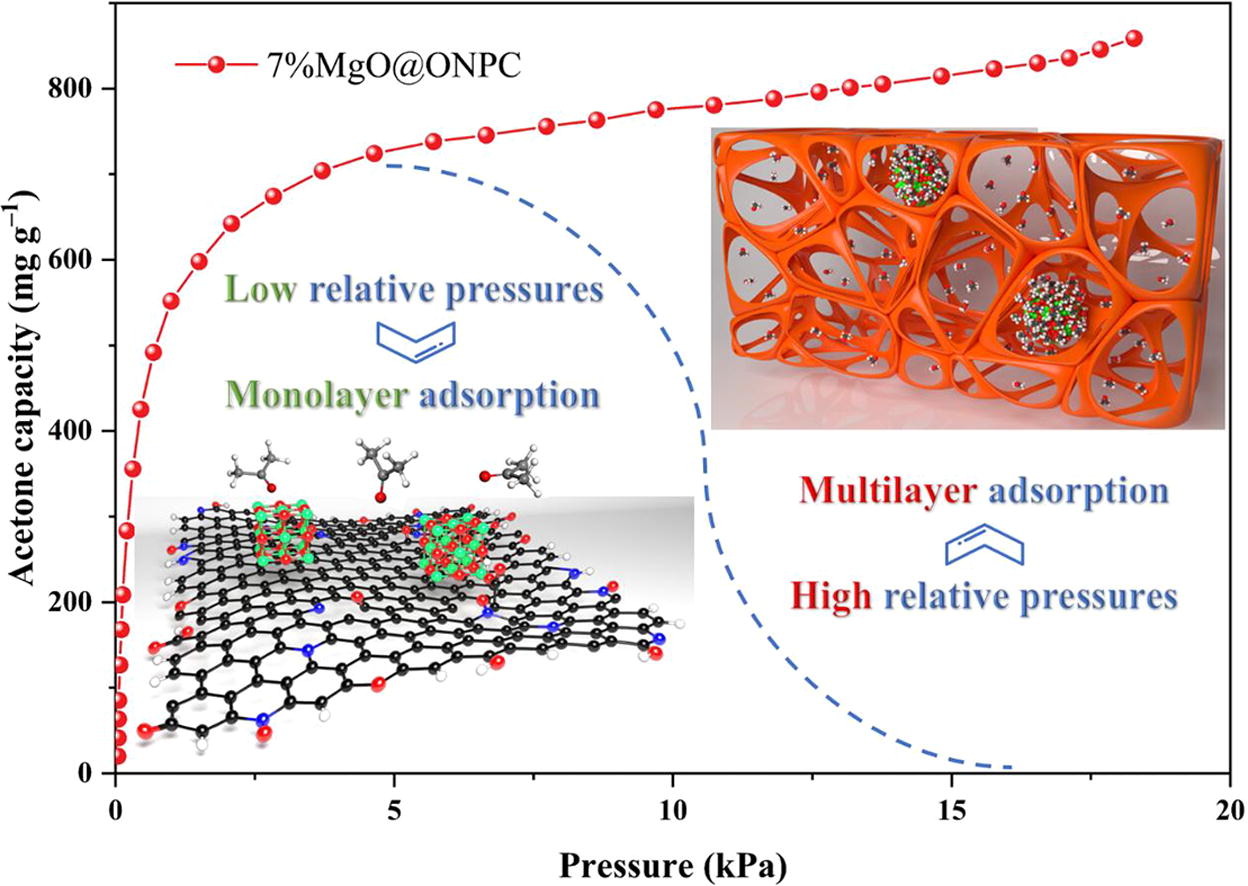
DOI number:10.1016/j.cej.2020.124173
Affiliation of Author(s):中南大学
Journal:Chemical Engineering Journal
Key Words:Acetone adsorption; Activated carbons; DFT; Functional groups; MgO
Abstract:The amount of anthropogenic volatile organic compounds (VOCs) emission keeps increasing worldwide, and it urges the development of VOC emission reduction technology. Efficient and environmentally friendly adsorption technology is receiving more interest, and carbon-based materials have attracted enormous attention for VOC capture. However, the poor adsorption capacity and cycling stability still hinder their application. Moreover, the mechanism of adsorption behavior between functionalized carbon surfaces and VOCs has not been investigated in detail. Herein, we report a sustainable and cost-effective method for the anchoring of the MgO nanoparticle onto O/N co-doped porous carbon derived from waste biomass (denoted as MgO@ONPC). The optimized 7%MgO@ONPC composite exhibited an exceedingly high acetone adsorption capacity (859 mg g−1 at 25 °C, 18 kPa) and excellent cycling stability (95.2% capacity retention over 10 cycles). Acetone dynamic breakthrough tests showed that the adsorption capacity of 7%MgO@ONPC composite at 10% breakthrough level (10% BT) and 100% BT was 384 and 508 mg g−1, respectively (in terms of PC: 3.9 × 10−3 and 5.2 × 10−2 mol kg−1 Pa−1, respectively). Isotherm model fitting and quantum chemistry calculation studies indicated O/N functional groups and MgO nanoparticles can significantly improve the acetone monolayer adsorption at low relative pressures due to hydrogen bonds and electrostatic interaction. Highly active MgO nanoparticles and pore structure characteristics are found to be determinative factors for acetone adsorption at high relative pressure.
Indexed by:Journal paper
Document Code:124173
Volume:387
ISSN No.:13858947
Translation or Not:no
Date of Publication:2020-05-01
Included Journals:SCI
Links to published journals:https://www.sciencedirect.com/science/article/pii/S1385894720301649?via%3Dihub
